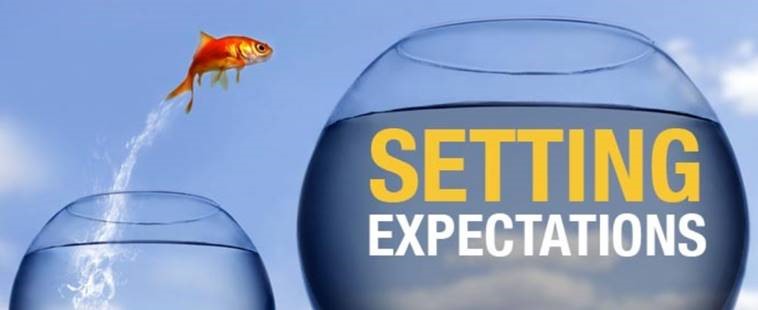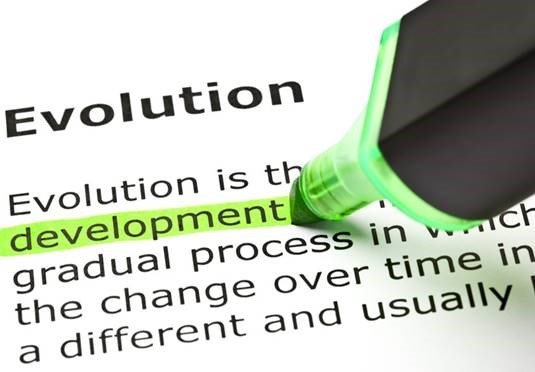In a previous post I mentioned a least common denominator, among many, which contributes to the likelihood of a business failing; that of the inability to flawlessly execute on the fundamentals from the perspective of the customer. The key point to extract and internalize here is that of “from the perspective of the customer.” After all, no matter how great the idea is and no matter how high the quality of the good or service provided, if the needs of the customer are not put above all others, then regardless of the purity of intent, failure is almost certainly a foregone conclusion.
In fact, and topping the list of most common reasons for startup failures, is that of having no market need for said good or service provided. In using what might be looked upon as a cliché via “It’s all about the customer”, it is a statement which is as accurate today as it was upon its first use. With the customer needing to be the primary focal point of the broader strategy, an outside-in lens must be taken throughout the end to end customer engagement lifecycle and this starts long before any knock on a door or click onto a website.

From entry to exit points, customer engagement must be thought of as a “lifecycle”. Beyond merely an idea, it is a process and its related success can only be ensured if the customer perspective remains integrated at each and every decision point. Yes, one must stay true to their concept and vision, but if the outside-in lens is overlooked then the initial intent of the business itself must be questioned. As follows, “Are you in business for yourself, or are you first and foremost providing a solution and/or filling a void for a clearly defined customer need?”
If the answer comes in the form of the latter, then the next step is drilling down a level expose the elements within your customer engagement lifecycle as a whole. This is the foundational starting point to keep in mind when shifting from a concept to that of an executional strategy and is what I like to refer to as the “E-times-3” principle. They are:
1) Expectation Setting
2) Executing to Expectations
3) Evolution and Modification of Expectations
Although these seem simple enough, expectations are to business what location is to real-estate, are every bit as important, and keep the customer the primary focal point of your business. This way of thinking is not only a necessity, but must be integrate into and throughout planning cycles as well as the decision making process itself.

Before I get into “E-times-3” there is a fundamental cornerstone that must be in place before a conversation relative to the customer engagement lifecycle can even take place and comes by way of clarity of strategy. In the simplest terms possible, you can’t go after something which isn’t clearly defined and once defined, it is that clarity which drives change and allows for both the planning of roadmaps and their related, measurable milestones. This is where the shift from strategic planning to tactical execution takes place and businesses with no concrete vision or directional strategy will inevitably fail due to lack of clarity. In paraphrasing Michael Gerber, author of The E Myth Revisited,
“…details must come first in validating the proof of concept, and only then can execution begin. It must NOT come by way of executing on vagueness and making adjustments as needed. The tactical elements of running a business cannot supersede the strategy behind it, as robust modeling in this area matters. With order and predictability come success and uniformity through structure is paramount to ensure the best customer experience possible…”
Again, the outside-in customer perspective is everything and you must deliver on the expectation of which was defined by the underpinning of the overall vision.
That said, there becomes a time wherein you must step forward and sometimes good is good enough as a starting point and, as Donna Fenn highlights in 9 Brutal Startup Mistakes That Can Kill Your Business, “…trying to be great at everything from the get-go can be toxic for a startup.”
Thus, in pivoting back to “E-times-3”, are you clear as to your customer expectation strategy and related execution modeling? Stated another way, is the lens from which you view your business that of merely a rose tinted “fingers crossed” lens or that of an outside-in lens which obsesses over the customer at every opportunity?
Let me speak to these in more detail.
1. Expectation Setting:
How many times have you entered a place of business only to not be acknowledged while waiting until being served? Conversely, how does that same experience differ if only to be recognized upon entry by way of a welcoming smile and a simple, “I’ll be right with you.”? The nuances in this example are minor yet the customer perception differs drastically wherein expectations are set in a matter of moments. The point here is that, regardless of the size or complexity of the interaction, the basics do matter one must take a Big Picture view in linking the broader strategy (in this example customer service excellence) to the actionable execution task at hand. The quality of the experience is a direct reflection of you and, in an online world, the impressions you make are magnified.
There is also such a thing as spending too much time on executing upon the deliverable (the good or service), when sufficient time hasn’t been spent on the fundamentals strategy they are based on. Further, every step skipped only highlights the probability of failure and “winging it” is not a viable option. All aspects of customer engagement must link together and directly correspond back to the strategy by way of validating the vision, bolstering the brand, and ultimately the overall strength of your value proposition.
 Strong, weak, or having missing links, what is the strength of your value proposition?
Strong, weak, or having missing links, what is the strength of your value proposition?
In thinking about setting expectation with a said outside-in lens applied remember that you need to appear and act as if you’re mature and seasoned. This is especially when starting a new business or as a newer startup. If the initial impression you give is one of being new and wet behind the ears, then the expectation your setting will be one of a rookie with most customers unwilling to take the risk. Keep in mind that you might not have a seasoned track record as a new entity, but you do bring with you the culmination of all of your experience to date. That alone is worth more than you think. The learning here is to get ahead of and stay in front of assumptions. In a recent article I read, what caught my eye was that,
“When assumptions start being made, you’re exposing yourself to a disconnect; you’re thinking one thing and your client’s likely thinking something totally different.”
Related to this is the very real risk of exposing yourself to what you can’t deliver which can be equally, if not more, damaging. Be honest to yourself, tight on delivery upon initial engagement, and don’t light up offerings or services until which time they are ready. More than anything, remember to be patient throughout the process and do it right. Remember that the customer engagement lifecycle is a looped process wherein although you’ll be able to make adjustments, making large mistakes from the start can be costly with some being harder to recover from than others.
2. Executing to Expectations:
Once the initial expectation has been set, and hopefully you’ve delighted your client base, you must build upon any momentum gained and consistently deliver outstanding execution excellence. This is where the rubber hits the road and your deliverable isn’t simply the product or service itself, but rather the entire experience from engagement to said deliverable. The delivery of, and the perception of how the overall product or service is received, represents your business as a whole and how it is both represented and received.
It’s no surprise that a bad customer or client experience is more likely to be shared than good ones (read more) and understanding end to end execution customer awareness cannot be underestimated. As referenced, if you provide a subpar experience people are highly likely to tell others. However, merely meeting expectation is status quo at best and unfortunately, most people are indifferent in telling others.
In order for your base to take notice and voice a positive experience to others, the experience must be stellar and fall well beyond expectation. This is the sweet spot you’re aiming for with the goal being to delight and deliver over expectation. After all, if you don’t, your competition will.
An important item to point out here is that even when the level service is high and expectations are met or even exceeded, there is an additional layer needing to be factored in and this is the element of adding consistency to the experience. What I mean here is that hitting the bullseye once is not nearly enough and it’s more important that excellence of experience is delivered each and every time; time and time again. It is the small gains which will multiply and the relative magnitude of small gains over time cannot be underestimated. After all, it’s not a sprint, so be prepared to be in it for the long haul.
To illustrate the importance of this using a monetary example, if you’re a small business who making $1.5M a year, by improving your retention of your existing base and/or gaining new clients & customers by just 5%, you can increase your profits by $300K and that’s nothing short of astonishing.
Is a 5% gain the catalyst for you to alter your engagement model?

Predictability is also paramount and, once the initial expectation is met, becomes the new expectation and the related level of measure. After all, you’re only as good as the last perception left from your latest engagement and your overall orchestration of execution must be looked upon holistically. Again, it must tie back to your lager vision, the related strategy, and the operational plan from which to execute against.
A final point here, and one not to be taken lightly, is that of how you handle mistakes. It is inevitable that at some point something will go wrong and, be it either unintentional or accidental, it’s how you handle it that counts and it starts with a combination of ownership coupled with timing. Simply, you must own any and all mistakes and do so immediately upon recognition of the problem. Regardless of who is at fault, you are the face of your business and everything starts and ends with you. Period! You not only need to be honest with yourself in these situations, but more so, apologize, fix the issue, and lastly reset expectations. Like it or not, you’re now back at square one.
This takes me to my final point of E-times-3, that being the evolution of the experience and fine tuning where and as needed.
3. Evolution and Modifying Expectations:
The inability to learn from failure is failure in and of itself. Continued evolution is just as important as the initial starting point and the only inconsistency to the experience should be that of improvements to the experience. Businesses that plateau and/or fail to meet changing market dynamics or recognize who their real competition is are destined to fail and standing still is nothing short of a self-induced death sentence.
Successful business owners on the other hand are always adjusting things and, when doing so, look upon the exercise as an active, action oriented process which is ongoing and not that of a reactionary one-time thing. Those who are better at it quickly develop a knack to implement changes both quickly and proactively. Conversely, businesses that fail typically do so because they are ignoring the evolving landscape around them.

The evolutionary aspects of modifying expectations are a process.
Similar to what I mentioned earlier, and relative to businesses failing because there is no legitimate market need for their goods or services provided, there is a paralleling theme when speaking to the evolution of modifying the expectation. Adaptation must be specifically designed to focus on the customer by way of, you guessed it, an outside-in customer lens or what many to refer to as “voice of the customer”.
George Meszaros, editor and co-founder of Success Harbor, put it nicely when he wrote,
“Every business will tell you that the customer is #1, but only a small percentage acts that way. Businesses that fail lose touch with their customers. Keep an eye on the trending values of your customers. Find out if they still love your products. Do they want new features? What are they saying? Are you listening?” He went on to say, “I once talked to the CEO of a training company who told me that they don’t respond to negative reviews because they are unimportant. What? Are you kidding me?”
So which approach will you take? Will you listen to and adjust accordingly in order to reset expectations based on the voice of the customer, or will you ignore the best feedback there is (by way of the customer themselves) and fail to evolve? Did you notice that I said adjust vs. react? The difference being that reactionary behaviors are typically made in haste, are not well thought out, and can take your focus away from your long term strategy objectives.
Additionally, the inability to learn from failure is a leadership weakness wherein those that welcome it become far better leaders over time. Again, this is a process and, if they can instill this notion across their employee base, the organization will be stronger as it becomes a trickle down best practice. Further, and although learning from unforeseen client/customer issues can be difficult, the reality of the situation is that A Complaint Is a Gift. Those that learn from and adapt to failure in a positive manner understand that this exercise is a muscle worth building. Thus, don’t just take aboard negative feedback, rather proactively seek it and ask for it. Only then will your end to end customer engagement lifecycle improve; rinsing and repeating from there.
Change is inevitable and it’s how you react and adapt to it that will determine if you remain both relevant and competitive. You must be willing to take on constructive criticism, deconstruct the chaos, recognize the opportunities, and embrace the possibilities; only then will you be able to significantly increase your probability of success.
In closing I wanted to reiterate the point that expectations are to business what location is to real-estate, are every bit as important, and keep the customer the primary focal point of your business. More so, execution excellence throughout the end to end customer engagement lifecycle is how your customers or clients perceive you; this being the true barometric health of your overall business. The fact of the matter is that you’re in business for the customer and freebees & favors are few and far between. Your focus must be on them at all times and, if you don’t appropriately set expectation, deliver on expectation, and evolve to meet changing expectations your competition will and, over time, your base will slowly disappear.
